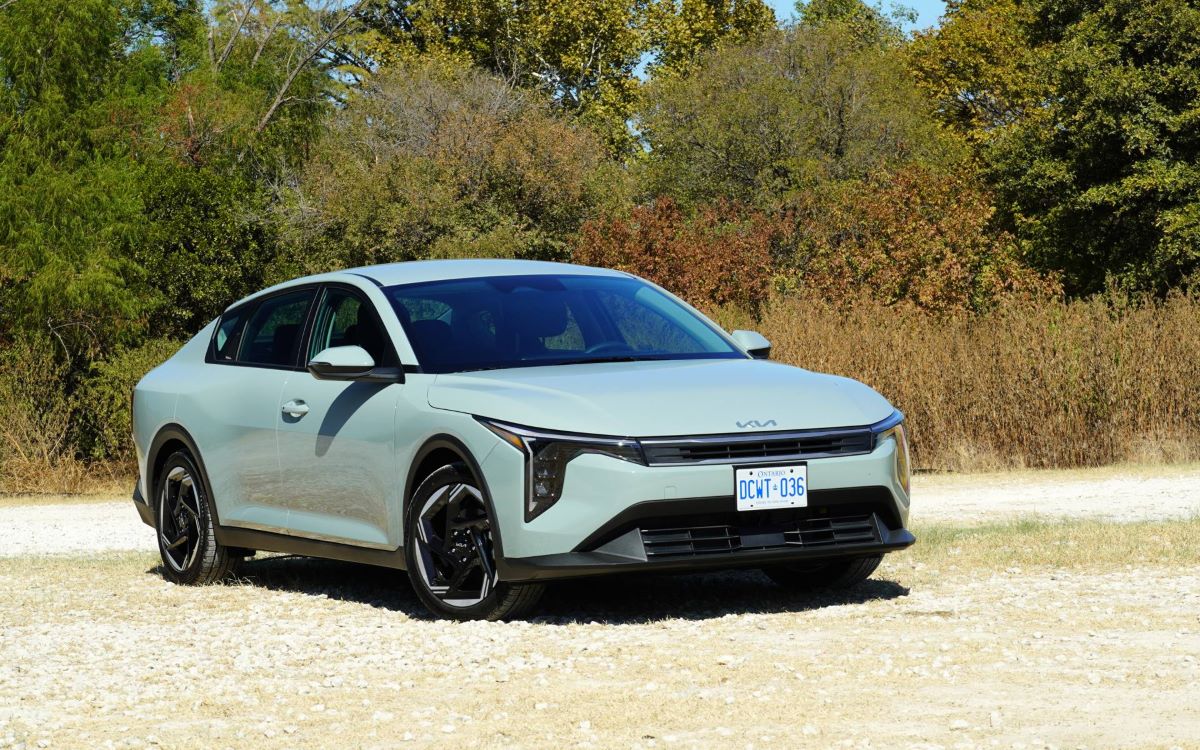The automotive landscape has dramatically transformed in the wake of rising vehicle theft rates, with car manufacturers forced to confront an increasingly sophisticated criminal ecosystem.
Modern thieves employ everything from relay attacks on keyless entry systems to social media-driven theft trends that target specific models lacking basic security features.
This technological arms race has created a stark divide in the industry: progressive brands that have invested heavily in cutting-edge theft-prevention technologies, and those that have remained dangerously complacent with outdated security measures.
Recent statistics reveal that vehicle thefts have experienced significant fluctuations, with automakers, mainly Hyundai and Kia, bolstering anti-theft measures leading to notable improvements in theft prevention.
However, the threat landscape continues to evolve, with criminals adapting to new technologies as quickly as manufacturers can implement them.
The brands that have embraced innovation are deploying sophisticated solutions including Ultra Wide Band technology, advanced immobilizers, GPS tracking systems, and AI-powered security protocols.
Meanwhile, legacy manufacturers who have failed to modernize their security infrastructure find themselves increasingly vulnerable, with some models becoming social media sensations for all the wrong reasons.
This comprehensive analysis examines ten major automotive brands, revealing which have successfully adapted to modern theft challenges and which remain dangerously exposed to criminal exploitation.
5 Brands Leading the Charge in Theft-Proof Technology
These innovative automotive manufacturers have revolutionized vehicle security through sophisticated technological integration that surpasses traditional alarm systems.
Their comprehensive approach combines real-time GPS tracking, advanced biometric authentication, and artificial intelligence-powered surveillance to create nearly impenetrable security networks.
Premium car makers like BMW and Mercedes-Benz have added features that enable encrypted keyless entry and real-time theft alerts directly to a user’s smartphone, representing the cutting edge of automotive protection.
Much of this can be attributed to three key Tesla security features: GPS Tracking, Sentry Mode, and Pin to Drive. Tesla has introduced “Pin to drive”, which requires drivers to enter a pin to start the vehicle.
These manufacturers understand that modern vehicle theft requires equally modern countermeasures, implementing multi-layered security protocols that include encrypted communication between key fobs and vehicles, motion-activated recording systems, and remote monitoring capabilities that instantly alert owners to suspicious activity around their vehicles.
1. Tesla: The Digital Fortress Revolution
Tesla has fundamentally redefined automotive security by treating vehicles as sophisticated digital ecosystems rather than traditional mechanical systems.
The company’s approach to theft prevention represents a paradigm shift that other manufacturers are scrambling to emulate, establishing new industry standards for integrated security solutions.
The foundation of Tesla’s theft-proof technology lies in its revolutionary Sentry Mode, an AI-powered surveillance system that transforms every Tesla into a mobile security station.
This system utilizes the vehicle’s eight external cameras to maintain 360-degree monitoring when parked, automatically detecting and recording suspicious activities.
The system’s intelligence extends beyond simple motion detection, employing machine learning algorithms to differentiate between legitimate pedestrian traffic and potential theft attempts.
When threats are detected, Sentry Mode initiates a multi-layered response protocol, including bright headlight activation, alarm systems, and real-time notifications sent directly to the owner’s smartphone with video evidence.
Tesla’s mobile connectivity infrastructure provides unprecedented theft recovery capabilities through its integrated LTE connection. Unlike aftermarket GPS tracking devices that can be disabled by removing external components, Tesla’s tracking system is embedded within the vehicle’s core architecture, making it virtually impossible to disconnect without specialized knowledge and tools.
The system provides real-time location tracking with accuracy down to specific parking spaces, enabling law enforcement to locate stolen vehicles quickly and efficiently.
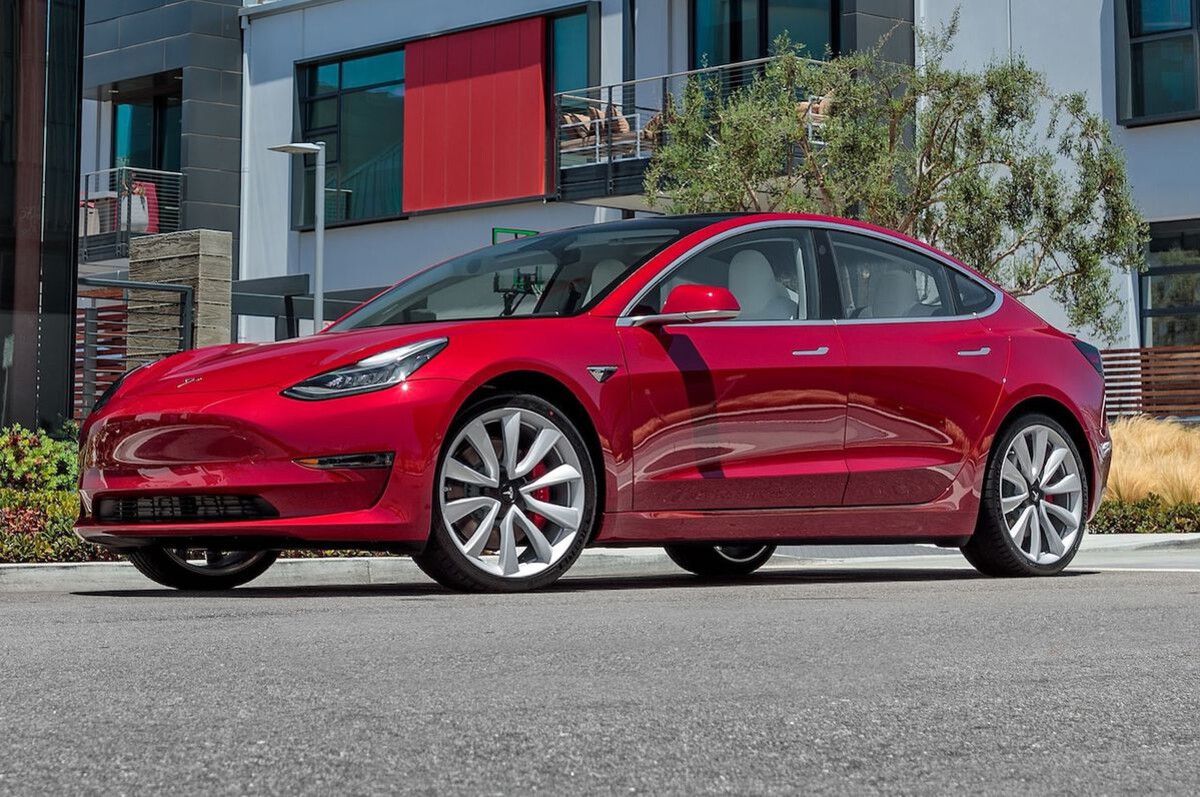
The company’s over-the-air update capability represents perhaps the most innovative aspect of its security approach. Tesla can remotely patch security vulnerabilities, deploy new anti-theft features, and respond to emerging criminal tactics without requiring physical service appointments.
This capability was demonstrated when Tesla rapidly deployed updates to counter relay attacks on its keyless entry system, implementing time-based authentication protocols that render stolen key fob signals useless within seconds.
Tesla’s approach to physical security integrates seamlessly with its digital systems. The vehicles employ sophisticated proximity sensors that can detect when key fobs are being artificially amplified through relay attacks, automatically disabling keyless entry when suspicious signal patterns are detected.
The company has also implemented PIN-to-drive functionality, requiring owners to enter a personal identification number before the vehicle can be driven, even with a valid key fob.
The Tesla mobile application serves as a comprehensive security command center, allowing owners to monitor their vehicles remotely, receive instant alerts, and even disable stolen vehicles completely.
The application’s integration with Tesla’s service network means that stolen vehicle reports are automatically shared with law enforcement agencies and Tesla’s security team, creating a collaborative recovery network that has proven highly effective in vehicle recovery operations.
Tesla’s commitment to security extends to its charging infrastructure, with Supercharger stations equipped with advanced surveillance systems and real-time monitoring capabilities.
This comprehensive approach creates a security ecosystem that protects Tesla vehicles throughout their entire operational lifecycle, from private parking spaces to public charging locations.
2. Land Rover: Military-Grade Security Innovation
Land Rover has positioned itself at the forefront of automotive security technology by implementing military-grade defense systems that reflect the brand’s heritage in producing vehicles for defense and security applications.
The company’s approach combines traditional British engineering excellence with cutting-edge electronic warfare countermeasures, creating vehicles that are genuinely difficult for criminals to compromise.
The cornerstone of Land Rover’s security revolution is its Ultra Wide Band (UWB) technology, which represents one of the most sophisticated anti-theft systems currently deployed in consumer vehicles.
The new Defender uses Ultra Wide Band technology. This simultaneously transmits over a vast range of frequencies, rendering any relay device the thieves have unable to pick up the signal effectively.
This technology, originally developed for military communications, creates a virtually impenetrable barrier against the relay attacks that have plagued premium vehicles with keyless entry systems.
Land Rover’s Secure Tracker system integrates multiple tracking technologies, including GPS, GSM, and VHF radio communications to ensure stolen vehicles can be located even when criminals attempt to block traditional tracking signals.
The system’s redundant communication protocols mean that disabling one tracking method automatically activates alternative systems, creating a layered defense that has proven exceptionally effective in vehicle recovery operations.

The company’s Activity Key technology demonstrates Land Rover’s understanding of modern lifestyle security needs. This waterproof, wearable device allows owners to lock their traditional key fob inside the vehicle while engaging in outdoor activities, eliminating the risk of key theft while maintaining convenient access to the vehicle.
The Activity Key employs encrypted communication protocols that are virtually impossible to duplicate or intercept. Land Rover’s integration of biometric security features represents a significant advancement in automotive access control.
The company’s Touch Pro Duo infotainment system can be configured to require fingerprint authentication for vehicle startup, creating a personalized security barrier that cannot be bypassed even if thieves obtain physical access to key fobs.
This system maintains a database of authorized users and automatically logs access attempts, providing valuable forensic evidence in theft investigations.
The Defender’s physical security features reflect Land Rover’s military heritage, with reinforced door frames, tamper-resistant locks, and armored key components that resist common theft techniques.
The vehicle’s electronic architecture is designed with multiple redundant systems, ensuring that disabling one security component does not compromise the entire security network.
Land Rover’s collaboration with law enforcement agencies worldwide has resulted in the development of specialized recovery protocols that leverage the brand’s advanced tracking capabilities.
The company maintains dedicated theft response teams that work directly with police departments to coordinate recovery operations, utilizing real-time vehicle data to assist in apprehending criminals and recovering stolen vehicles.
3. BMW: Intelligent Security Ecosystem
BMW has developed one of the most comprehensive and intelligent automotive security ecosystems in the industry, leveraging the company’s expertise in connected vehicle technology to create multilayered defense systems that adapt to emerging theft threats.
The German manufacturer’s approach combines traditional automotive security with cutting-edge artificial intelligence and machine learning capabilities.
BMW’s Intelligent Personal Assistant serves as the central nervous system for the vehicle’s security infrastructure, employing natural language processing and behavioral analysis to detect suspicious activities.
The system learns from normal usage patterns and can identify when a vehicle is being accessed or operated outside established parameters, automatically initiating security protocols that include engine immobilization, location tracking, and owner notification systems.
The company’s ConnectedDrive platform represents a revolutionary approach to vehicle security that treats each BMW as a node in a larger security network.
When one vehicle in the network detects suspicious activity, the information is automatically shared with nearby BMW vehicles and BMW’s central security monitoring system, creating a collaborative defense network that can identify and respond to theft patterns across entire metropolitan areas.
BMW’s integration of blockchain technology into its security infrastructure represents one of the most advanced implementations of distributed ledger technology in the automotive industry.
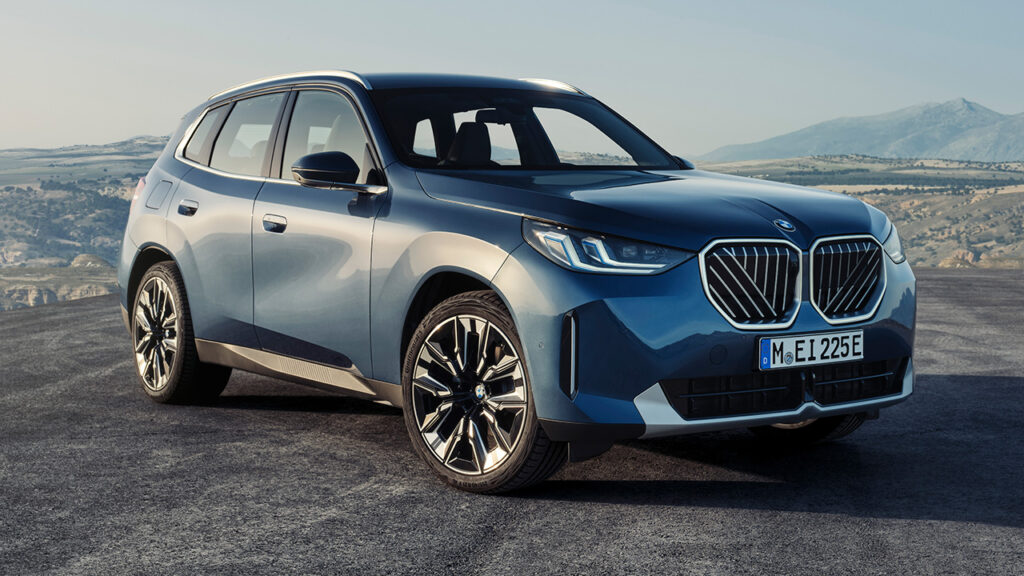
Each vehicle’s security events are recorded in an immutable blockchain that provides complete audit trails for forensic analysis and insurance claims processing.
This technology makes it virtually impossible for criminals to alter or delete security logs, providing law enforcement with reliable evidence for prosecution.
The company’s Mobile Key technology employs near-field communication (NFC) and ultra-wideband positioning to create secure, encrypted communication between smartphones and vehicles.
Unlike traditional key fobs that can be easily cloned or amplified, BMW’s digital keys employ rotating encryption codes that change with each use, making them virtually impossible to intercept or replicate.
The system also includes location-based authentication that requires the phone to be within specific proximity parameters to the vehicle. BMW’s Remote Software Upgrade capability allows the company to deploy security updates and new anti-theft features directly to vehicles without requiring service appointments.
This over-the-air update capability has proven crucial in responding to emerging theft techniques, with BMW able to push security patches to its entire global fleet within hours of identifying new threats.
The company’s integration with insurance telematics systems provides additional security benefits by automatically sharing theft event data with insurance providers, streamlining claims processing, and enabling more accurate risk assessment.
BMW’s partnership with leading insurance companies has resulted in reduced premiums for owners of vehicles equipped with advanced security features, creating financial incentives for security adoption.
BMW’s Security Plus package includes advanced features such as interior motion sensors, tilt sensors for wheel theft detection, and glass breakage sensors that can differentiate between accidental impacts and deliberate break-in attempts. The system’s artificial intelligence capabilities ensure minimal false alarms while maintaining maximum sensitivity to genuine threats.
4. Genesis: Luxury Security Redefined
Genesis has rapidly established itself as a leader in luxury vehicle security by implementing comprehensive protection systems that rival those found in high-end security vehicles.
The Hyundai luxury division’s approach to theft prevention combines traditional Korean engineering excellence with advanced security technologies developed specifically for the premium market segment.
The Genesis Security System employs a multi-layered approach that begins with advanced perimeter monitoring using ultrasonic sensors and motion detectors positioned throughout the vehicle.
These sensors create an invisible security barrier that extends several feet beyond the vehicle’s physical boundaries, detecting approaching threats before they can make contact with the vehicle.
The system’s intelligence algorithms can differentiate between legitimate pedestrian traffic, small animals, and potential security threats, ensuring minimal false alarms while maintaining maximum protection.
Genesis’s integration of facial recognition technology represents one of the most advanced biometric security implementations in the automotive industry.
The system’s interior cameras can identify authorized drivers and passengers, automatically adjusting security settings based on recognized individuals.
When unauthorized persons are detected within the vehicle, the system can initiate lockdown protocols that include engine immobilization, automatic door locking, and emergency communication with law enforcement agencies.

The brand’s Guardian Angel technology provides 24/7 monitoring services that combine GPS tracking with human security operators who can respond to theft attempts in real-time.
When the vehicle’s security system detects suspicious activity, trained security personnel receive immediate notifications and can assess the situation using the vehicle’s cameras and sensors.
These operators can communicate directly with thieves through the vehicle’s sound system, often deterring theft attempts before they escalate. Genesis’s Smart Key system employs advanced encryption protocols that create unique authentication codes for each access attempt.
The system’s blockchain-based authentication ensures that even if criminals intercept key fob signals, they cannot replay them successfully. The Smart Key also includes biometric authentication features that require fingerprint or facial recognition confirmation before allowing vehicle access.
The company’s integration with smart home systems creates a comprehensive security ecosystem that extends beyond the vehicle itself. Genesis vehicles can communicate with home security systems, automatically activating property surveillance when the vehicle is parked at home and providing integrated monitoring of both vehicle and property security.
This holistic approach to security reflects Genesis’s understanding that luxury vehicle owners require comprehensive protection solutions. Genesis’s partnership with leading cybersecurity firms ensures that the brand’s security systems remain current with emerging digital threats.
The company maintains dedicated cybersecurity teams that monitor global threat intelligence and can deploy countermeasures to the entire Genesis fleet within hours of identifying new attack vectors.
Also Read: 5 Cars With Auto Engine Immobilizers and 5 With None at All
5. Volvo: Scandinavian Security Excellence
Volvo has leveraged its legendary reputation for safety to develop some of the most comprehensive theft-prevention systems in the automotive industry.
The Swedish manufacturer’s approach to security reflects the same methodical, research-driven philosophy that has made Volvo synonymous with occupant protection, resulting in security systems that are both highly effective and remarkably user-friendly.
Volvo’s Care Key technology represents a revolutionary approach to vehicle access control that eliminates many traditional theft vulnerabilities. The system employs encrypted digital keys that are stored securely in the owner’s smartphone, using advanced cryptographic protocols that make unauthorized duplication virtually impossible.
The Care Key system also includes comprehensive access logging that records every entry and exit, providing complete audit trails for security analysis.
The company’s Sensus Connect platform integrates vehicle security with comprehensive telematics services, creating a connected ecosystem that provides real-time monitoring and response capabilities.
When security events occur, Sensus Connect automatically notifies both the vehicle owner and Volvo’s customer care center, ensuring that appropriate response measures are initiated immediately.
The system’s integration with emergency services enables automatic dispatch of law enforcement when theft attempts are detected. Volvo’s implementation of artificial intelligence in its security systems sets new standards for intelligent threat detection. The AI-powered system learns from normal vehicle usage patterns and can identify anomalous behavior that may indicate theft attempts.

This includes unusual access times, abnormal driving patterns, and suspicious vehicle movements that deviate from established routines. The system’s machine learning capabilities continuously improve its threat detection accuracy, reducing false alarms while increasing sensitivity to genuine security threats.
The company’s approach to physical security includes advanced immobilizer systems that employ multiple authentication factors to prevent unauthorized vehicle startup.
Volvo’s immobilizers use rolling code technology that generates unique authorization codes for each ignition attempt, making it virtually impossible for thieves to bypass the system using traditional methods.
The immobilizer integrates with the vehicle’s engine management system, ensuring that attempted bypasses will result in immediate engine shutdown.
Volvo’s Security Centre provides comprehensive monitoring services that include GPS tracking, geo-fence alerts, and emergency response coordination.
The center’s operators are trained to work directly with law enforcement agencies worldwide, providing real-time vehicle location data and technical assistance during recovery operations.
This service has achieved exceptionally high success rates in stolen vehicle recovery, making Volvo vehicles significantly less attractive targets for thieves.
The company’s commitment to security extends to its manufacturing and distribution processes, with comprehensive anti-theft measures implemented throughout the vehicle lifecycle.
Volvo maintains strict security protocols at manufacturing facilities and dealerships, ensuring that vehicles are protected from theft even before they reach customers. This holistic approach to security has resulted in some of the lowest theft rates in the industry for Volvo vehicles.
5 Brands That Haven’t Upgraded Their Security in Years
These traditional automotive brands continue manufacturing vehicles with security systems that haven’t evolved substantially since the early 2000s, creating dangerous vulnerabilities in an era of increasingly sophisticated vehicle theft operations.
Their reliance on basic electronic immobilizers, standard key fob technology without encryption, and conventional alarm systems leaves their customers exposed to relay attacks, signal amplification theft, and organized crime operations that easily bypass outdated security measures.
Their hesitancy to modernize stems from cost-cutting measures, resistance to investing in advanced security infrastructure, and underestimation of current automotive theft methodologies.
However, this short-sighted approach proves devastating as vehicle theft rates continue climbing while their antiquated systems fail to deter professional thieves who have adapted to exploit these well-known security weaknesses.
Customers increasingly recognize these security gaps, leading to declining brand loyalty and negative publicity that damages long-term market positioning.
1. Hyundai: The Social Media Theft Target
Despite recent improvements, Hyundai continues to struggle with a security legacy that has made its vehicles among the most targeted by thieves in recent years.
The company’s historical approach to cost-effective manufacturing resulted in the omission of basic security features that are now considered industry standard, creating vulnerabilities that criminals have extensively exploited.
Only 26 percent of Hyundai and Kia vehicles from the 2015 model year came with immobilizers, a security feature that had become standard on most vehicles by that time.
This fundamental oversight created a massive security gap that criminals discovered and exploited through social media platforms, leading to viral videos demonstrating how Hyundai vehicles could be stolen using simple tools like USB cables and screwdrivers.
The social media phenomenon known as the “Kia Challenge” specifically targeted Hyundai and Kia vehicles manufactured between 2015 and 2021 that lacked engine immobilizers.
These videos, which garnered millions of views on platforms like TikTok and Instagram, provided step-by-step instructions for stealing specific Hyundai models, leading to a dramatic surge in thefts that overwhelmed law enforcement agencies in major metropolitan areas.
The challenge’s popularity among young people created a new category of opportunistic theft that law enforcement struggled to address effectively. Hyundai’s response to the crisis, while eventually comprehensive, highlighted the company’s initial underestimation of the security threat.
The manufacturer’s early attempts to address the issue through software updates and aftermarket security kits proved inadequate, as thieves quickly adapted their techniques to bypass these measures.

The company’s reliance on dealer-installed security solutions created inconsistencies in implementation and left many vehicles vulnerable to continued theft attempts.
The financial impact of Hyundai’s security failures extends far beyond vehicle theft statistics. Insurance companies began dropping coverage for specific Hyundai models or imposing significant premium increases, making these vehicles financially unviable for many consumers.
The company faced multiple class-action lawsuits from owners whose vehicles were stolen or who experienced insurance coverage difficulties due to security inadequacies. Hyundai’s traditional keyless entry systems remain vulnerable to relay attacks, despite the company’s awareness of this threat vector.
The manufacturer’s slow adoption of advanced encryption protocols and proximity-based authentication has left many models susceptible to criminals using signal amplification devices to steal vehicles parked in driveways or parking lots.
This vulnerability is particularly problematic for Hyundai’s premium models, which should theoretically offer enhanced security features. The company’s approach to physical security has also lagged behind industry standards, with many models featuring easily compromised door locks and ignition systems.
Hyundai’s reliance on traditional mechanical security measures, rather than electronic systems, has made its vehicles attractive targets for thieves who prefer quick, low-tech theft methods that don’t require sophisticated equipment or technical expertise.
While Hyundai has announced plans to implement comprehensive security upgrades across its model range, the company’s historical approach to security as a cost-cutting opportunity rather than a competitive advantage has created a reputation problem that will require years of consistent improvement to overcome.
The brand’s association with easy theft has become deeply embedded in criminal communities, making Hyundai vehicles continued targets even as security improvements are implemented.
2. Kia: Caught in the Viral Theft Storm
Kia’s security challenges mirror those of its corporate sibling Hyundai, but the brand has faced additional complications due to its positioning as a value-oriented manufacturer that has prioritized affordability over security features.
This approach has created a perfect storm of vulnerabilities that criminals have exploited extensively, making Kia vehicles among the most frequently stolen in many markets.
The fundamental issue with Kia’s security approach stems from the company’s historical decision to treat immobilizers and other anti-theft devices as premium features rather than standard equipment.
This strategy, while potentially cost-effective in the short term, created a massive security vulnerability that criminals discovered and exploited through organized theft rings and social media platforms. The resulting theft epidemic has damaged Kia’s reputation and created significant financial liabilities for the company.
Kia’s keyless entry systems represent a particularly problematic area where the company has failed to implement adequate security measures. The brand’s key fobs employ outdated encryption protocols that can be easily circumvented using readily available electronic devices.
Criminal organizations have developed sophisticated tools specifically designed to exploit Kia’s keyless entry vulnerabilities, enabling them to steal vehicles in seconds without triggering alarm systems or leaving physical evidence of forced entry.
The company’s approach to software security has been equally problematic, with many Kia models featuring infotainment systems that lack basic cybersecurity protections.
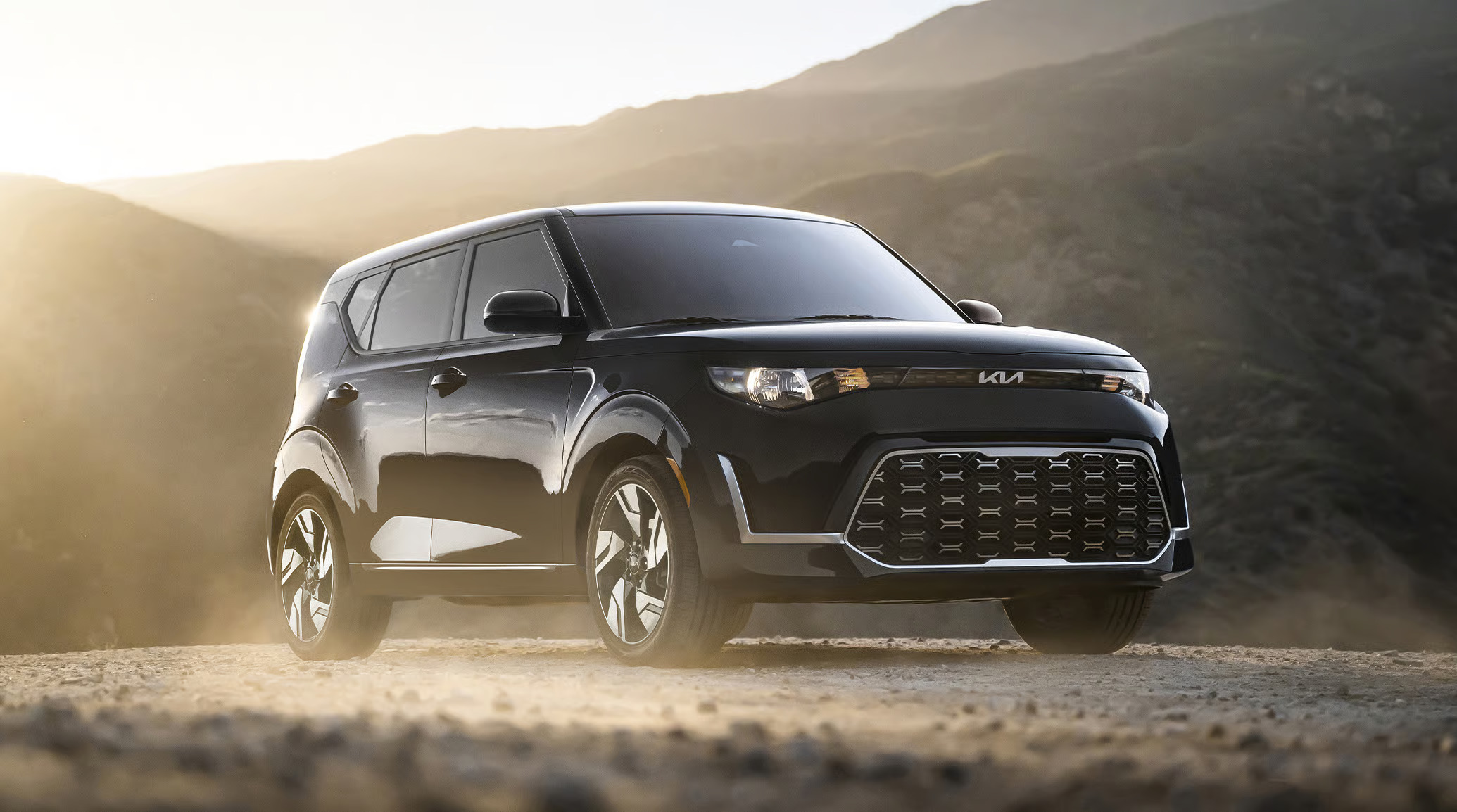
These systems can be compromised through USB ports, Bluetooth connections, or cellular networks, potentially allowing criminals to access vehicle control systems remotely.
The lack of secure software development practices has created multiple attack vectors that sophisticated criminals can exploit to disable security systems or track vehicle locations.
Kia’s manufacturing quality control processes have also contributed to security vulnerabilities, with inconsistent implementation of security features across different production facilities and model years.
This lack of standardization has created a complex landscape where identical models may have significantly different security capabilities depending on where and when they were manufactured.
This inconsistency makes it difficult for law enforcement to understand which vehicles are most vulnerable and complicates recovery efforts when thefts occur.
The company’s dealer network has struggled to implement consistent security upgrade programs, with many dealers lacking the technical expertise or resources to properly install and configure aftermarket security devices.
This has resulted in numerous instances where security upgrades were improperly installed or configured, creating false confidence among owners while leaving vehicles vulnerable to theft.
Kia’s approach to customer communication regarding security issues has been criticized for being reactive rather than proactive. The company has often waited until theft patterns became widespread before acknowledging vulnerabilities or providing guidance to owners.
This reactive approach has left many customers unaware of their vehicles’ security limitations and unable to take appropriate protective measures.
3. Dodge: Muscle Cars Without Modern Muscle
Dodge has maintained a reputation for producing powerful, high-performance vehicles that appeal to enthusiasts and collectors, but the brand has significantly lagged in implementing modern security technologies.
This approach has created a dangerous disconnect between the vehicles’ desirability and their ability to protect themselves from theft, making Dodge vehicles particularly attractive targets for criminals.
The Dodge Challenger and Charger, despite being among the most desired vehicles in the muscle car segment, employ security systems that are fundamentally unchanged from designs implemented over a decade ago.
These vehicles continue to rely on traditional key-based ignition systems that can be easily compromised using standard theft techniques. The lack of modern immobilizer technology means that criminals can steal these vehicles using methods that would be ineffective against most contemporary vehicles.
Dodge’s approach to keyless entry security has been particularly problematic, with the brand implementing systems that are easily compromised through relay attacks.
The company’s key fobs broadcast signals that can be intercepted and amplified by criminals using inexpensive equipment readily available online.
This vulnerability is especially concerning given the high value and desirability of many Dodge performance models, which are often targeted by organized theft rings operating in major metropolitan areas.
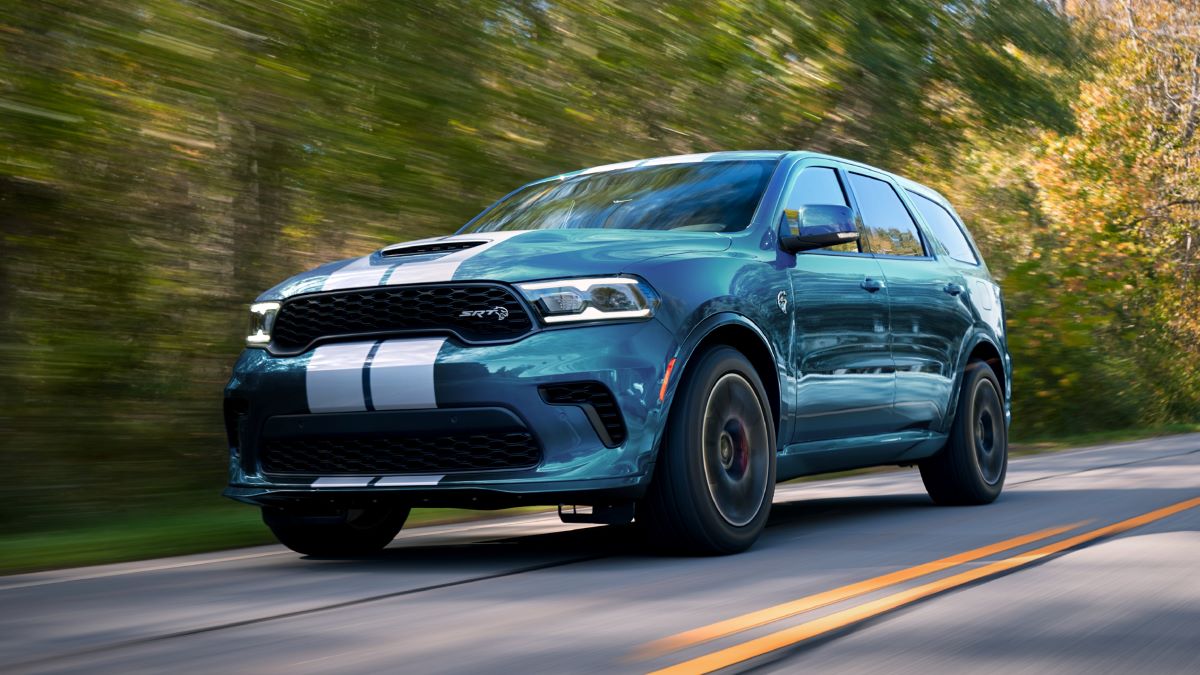
The company’s integration of modern connectivity features has created additional security vulnerabilities that the brand has failed to adequately address.
Dodge’s Uconnect infotainment system, while offering advanced connectivity and entertainment features, lacks comprehensive cybersecurity protections that would prevent unauthorized access to vehicle control systems.
Security researchers have demonstrated multiple methods for remotely accessing and controlling Dodge vehicles through vulnerabilities in the Uconnect system.
Dodge’s approach to physical security features has remained largely unchanged despite evolving criminal techniques and tools. The brand’s vehicles continue to use traditional mechanical locks and security systems that can be compromised using standard theft tools.
The lack of advanced sensors, motion detectors, or other modern security features means that thieves can approach and steal Dodge vehicles without triggering sophisticated alarm systems or automatic notification features.
The company’s limited implementation of tracking and recovery systems has made stolen Dodge vehicles particularly difficult to recover. Unlike brands that have integrated comprehensive GPS tracking and communication systems, Dodge vehicles often lack the technological infrastructure necessary for effective recovery operations.
This limitation has resulted in lower recovery rates for stolen Dodge vehicles and has made them attractive targets for criminals who prefer vehicles that are difficult to track.
Dodge’s approach to security has been further complicated by the brand’s focus on aftermarket modification and customization, which often involves disabling or bypassing factory security systems.
The company has failed to develop security systems that can accommodate modification while maintaining effective theft protection, creating a situation where enthusiasts must choose between customization and security.
4. Jeep: Off-Road Capability, On-Road Vulnerability
Jeep has built its reputation on producing vehicles capable of handling extreme off-road conditions, but this focus on ruggedness and capability has come at the expense of modern security features.
The brand’s approach to theft prevention has remained largely unchanged for years, leaving Jeep vehicles vulnerable to both traditional and modern theft techniques.
The Jeep Wrangler, despite being one of the most recognizable and desirable vehicles in the SUV segment, employs fundamentally outdated security systems compared to contemporary standards.
The vehicle’s removable doors and roof, while appealing to enthusiasts, create additional security vulnerabilities that criminals can exploit. The lack of comprehensive perimeter security means that thieves can access Jeep vehicles without triggering alarm systems or leaving evidence of forced entry.
Jeep’s keyless entry systems have proven particularly vulnerable to relay attacks, with criminals able to steal vehicles using signal amplification devices that extend the range of key fob signals.
The company’s failure to implement advanced encryption protocols or proximity-based authentication has left many Jeep models susceptible to theft techniques that would be ineffective against vehicles with modern security systems.
The brand’s approach to immobilizer technology has been inconsistent across different models and trim levels, with many vehicles lacking this basic security feature entirely.
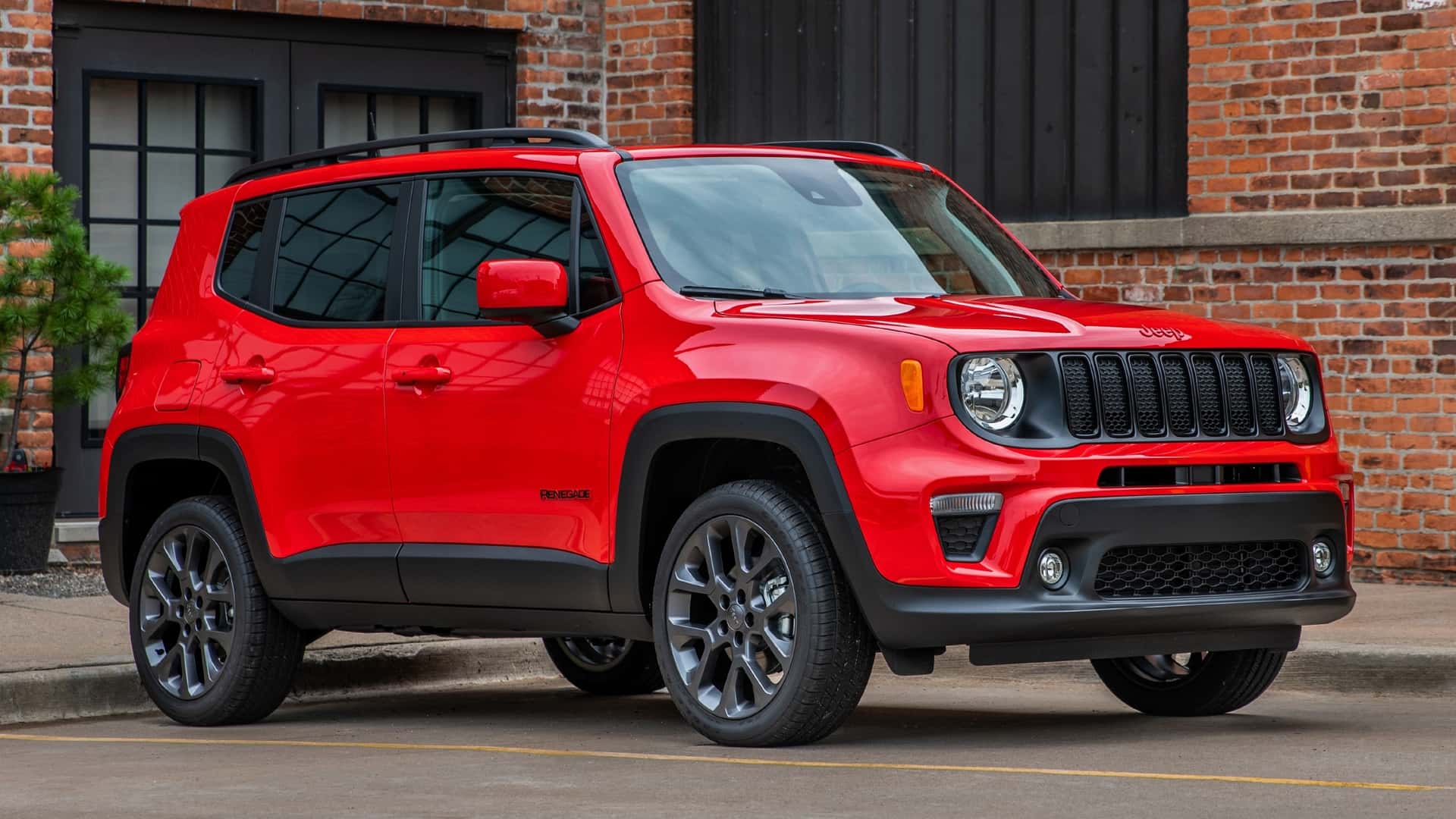
This omission is particularly problematic given the high resale value and parts demand for Jeep vehicles, which makes them attractive targets for both joyriding and professional theft operations.
The lack of immobilizers means that criminals can steal Jeep vehicles using simple tools and techniques that require minimal skill or sophisticated equipment.
Jeep’s integration of modern connectivity features has created additional security vulnerabilities that the company has failed to adequately address.
The brand’s Uconnect infotainment system shares many of the same cybersecurity weaknesses found in other Stellantis products, creating opportunities for criminals to remotely access and control vehicle systems.
The lack of comprehensive security protocols means that criminals can potentially disable alarm systems, unlock doors, or start engines remotely. The company’s approach to physical security has been further complicated by the Jeep community’s emphasis on modification and customization.
Many Jeep owners remove or modify security features to accommodate aftermarket accessories, creating additional vulnerabilities that criminals can exploit. The company has failed to develop security systems that can accommodate modification while maintaining effective theft protection.
Jeep’s limited implementation of tracking and recovery systems has made stolen vehicles particularly difficult to locate and recover. The brand’s vehicles often lack the sophisticated GPS tracking and communication systems found in other modern vehicles, reducing the likelihood of successful recovery operations. This limitation has made Jeep vehicles attractive targets for criminals who prefer vehicles that are difficult to track and recover.
5. Chrysler: Legacy Security in a Modern World
Chrysler represents perhaps the most concerning example of a manufacturer that has failed to adapt its security systems to modern threats. The brand’s approach to theft prevention has remained largely unchanged for over a decade, leaving its vehicles vulnerable to both traditional and emerging theft techniques.
This security stagnation has occurred despite the brand’s awareness of evolving criminal capabilities and the availability of advanced security technologies.
The Chrysler 300, despite being positioned as a premium sedan, employs security systems that are fundamentally outdated compared to contemporary standards.
The vehicle’s keyless entry system uses encryption protocols that were considered advanced in 2010 but are now easily compromised using readily available tools and techniques.
The lack of modern security features means that criminals can steal Chrysler vehicles using methods that would be ineffective against most other luxury sedans.
Chrysler’s approach to immobilizer technology has been particularly problematic, with many vehicles lacking this basic security feature or employing implementations that can be easily bypassed.
The company’s reliance on traditional mechanical security measures has left its vehicles vulnerable to theft techniques that have been common knowledge in criminal communities for years. This approach is especially concerning given the high value and desirability of Chrysler’s premium models.
The brand’s integration of modern infotainment and connectivity features has been implemented without adequate attention to cybersecurity, creating new vulnerabilities that criminals can exploit.
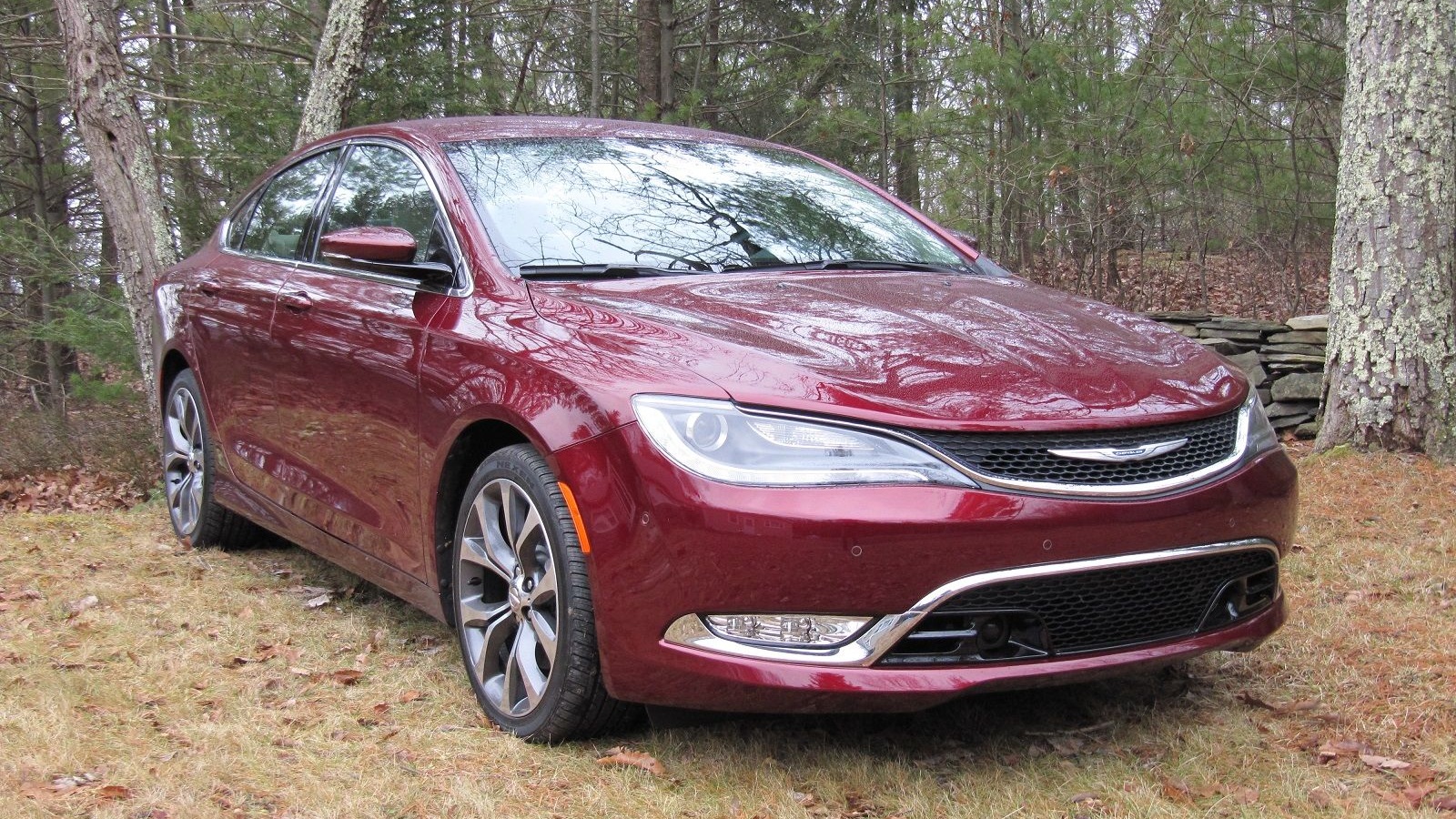
Chrysler’s Uconnect system, while offering advanced features and connectivity options, lacks comprehensive security protocols that would prevent unauthorized access to vehicle control systems.
Security researchers have identified multiple methods for remotely accessing and controlling Chrysler vehicles through vulnerabilities in the infotainment system.
Chrysler’s approach to software security has been reactive rather than proactive, with the company addressing vulnerabilities only after they have been publicly disclosed or exploited by criminals.
This approach has left many vehicles vulnerable to known attack methods for extended periods, creating opportunities for criminals to develop and refine their techniques.
The lack of proactive security measures has resulted in a cycle where criminals consistently stay ahead of the company’s security implementations.
The company’s limited investment in research and development for security technologies has left it dependent on outdated systems and approaches that are no longer effective against modern threats.
Chrysler’s security systems continue to rely on technologies and protocols that were cutting-edge fifteen years ago but are now easily defeated by criminals with basic technical knowledge and inexpensive tools.
Chrysler’s approach to customer communication regarding security issues has been inadequate, with many owners unaware of their vehicles’ vulnerabilities or the steps they can take to protect themselves.
The company has failed to develop comprehensive security awareness programs or provide clear guidance on best practices for vehicle protection. This lack of communication has left many customers with false confidence in their vehicles’ security capabilities while remaining vulnerable to theft.
The brand’s limited dealer network and reduced market presence have further complicated security upgrade efforts, with many dealers lacking the resources or expertise to properly implement security improvements.
This has created a situation where even when security upgrades are available, many customers are unable to access them effectively, leaving their vehicles vulnerable to continued theft attempts.
Also Read: 5 Cars With Encrypted Key Fobs and 5 That Broadcast Constantly

